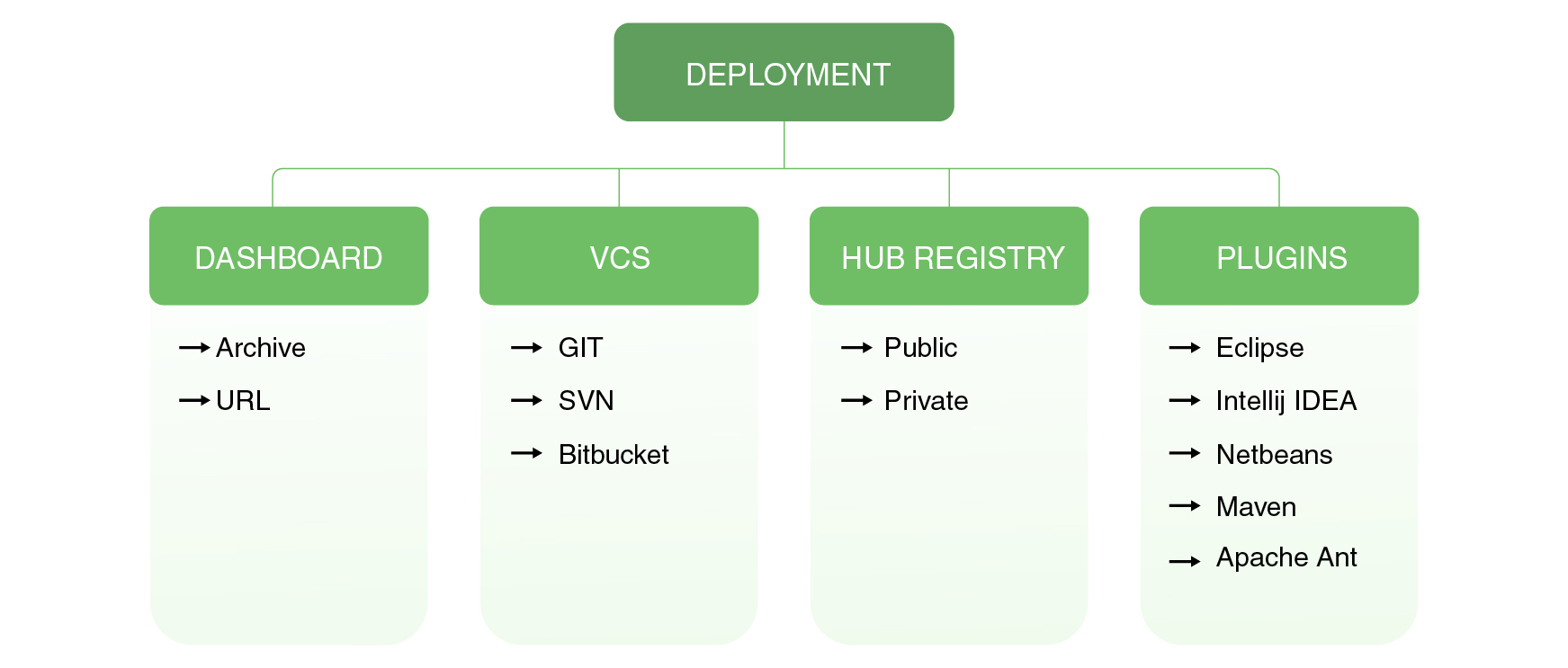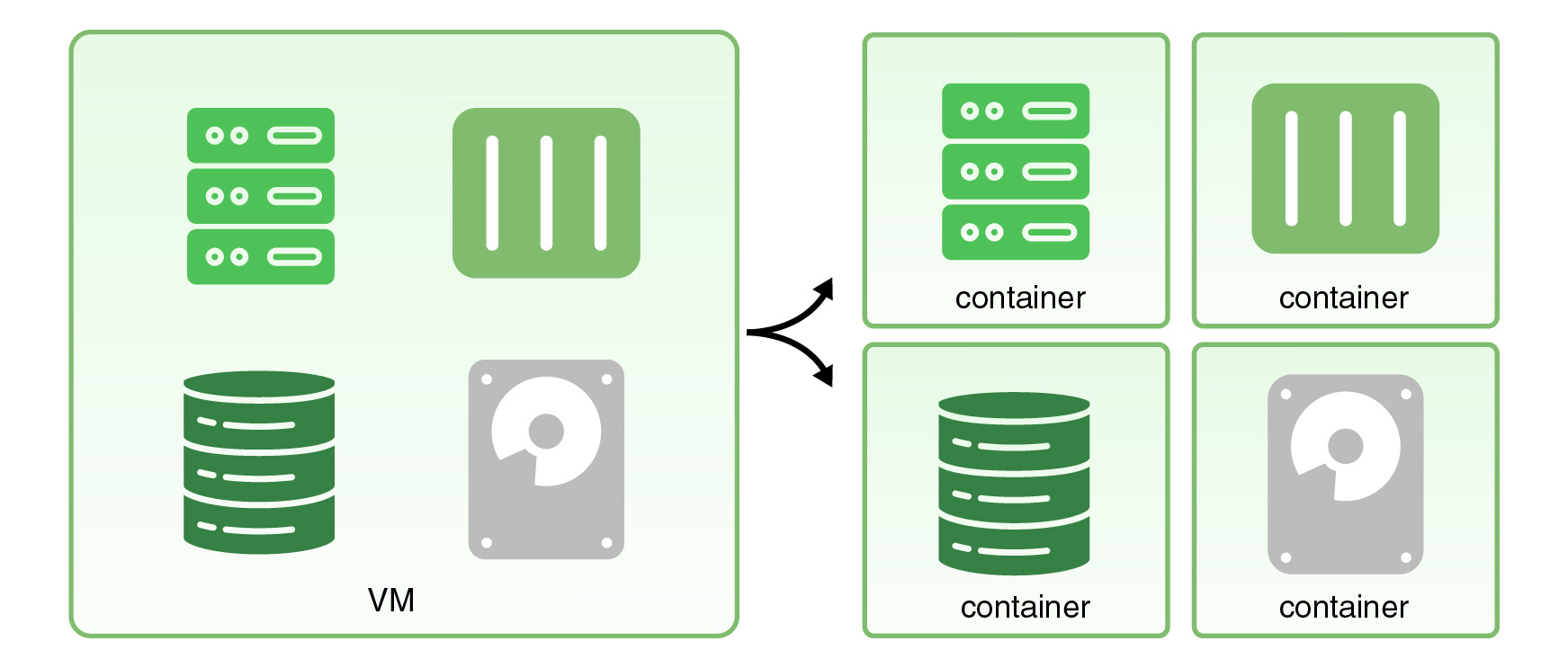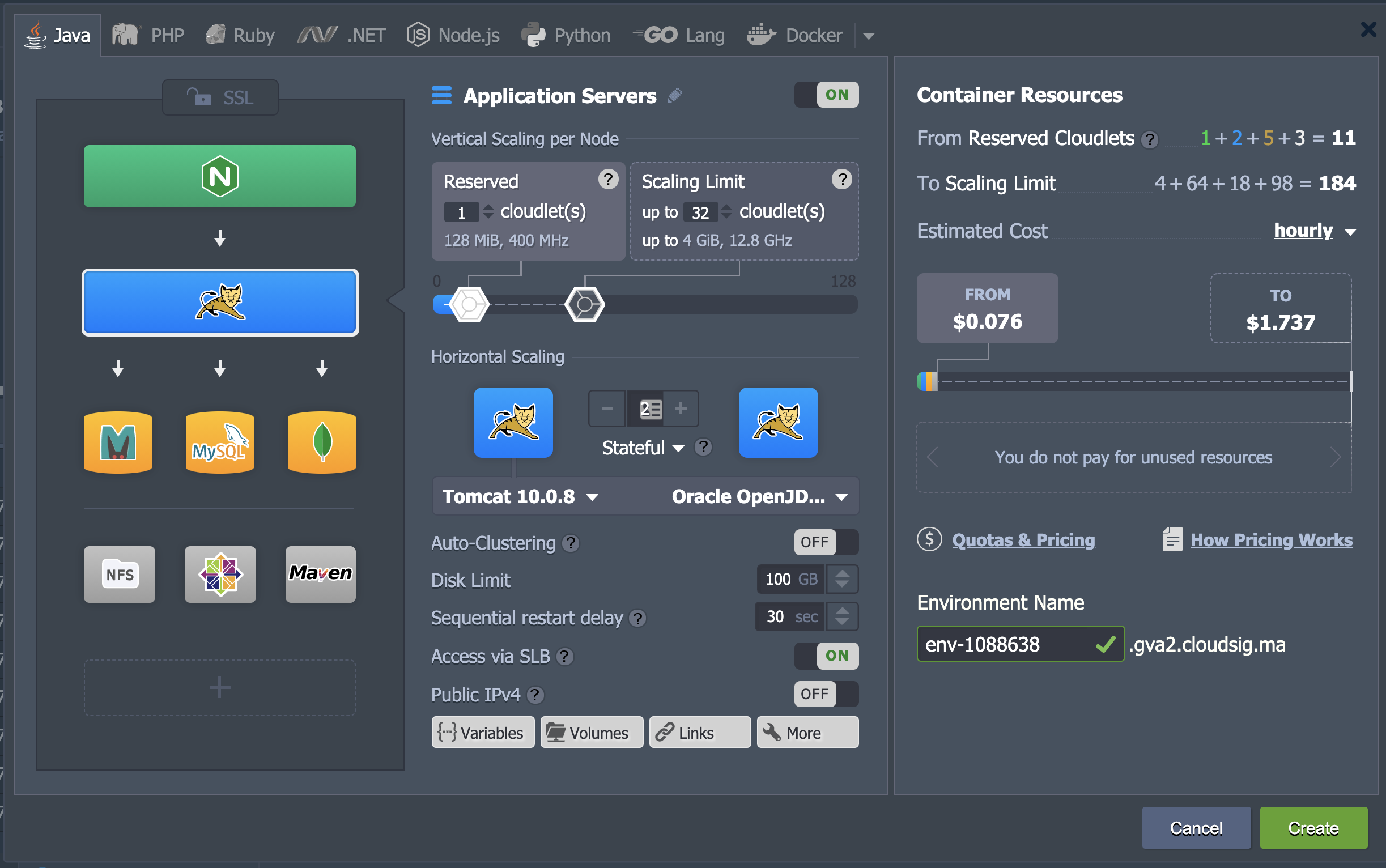Vendor Lock-In Migration
When it comes to making web-based applications, a lot of PaaS providers tend to make their developers use the Twelve-Factor App methodology. Other services will require you to build your application while keeping the requirements of immutable infrastructure, or proprietary runtimes and APIs in mind. In case you ever need to migrate from virtual machines to containers, you will have to make changes to your application code if you have used either of these approaches. Code changes are also necessary if you are shifting to another provider or decomposing traditional monoliths to microservices.
Platform: Zero Code Change Deploy and No Vendor Lock-In
CloudSigma PaaS makes your work easier by eliminating the necessity for specific standards. This means that you do not have to redesign your applications in the situations mentioned above. Neither do you need to change your source code to a proprietary API prior to deployment. All you need to perform deployment on the CloudSigma PaaS platform are archives (zip, tar.gz, war, jar, ear). Deployment can also be done using FTPS/SFTP, GIT/SVN (automatic updates can be accessed from the dev panel), or integrated plugins for Maven, Eclipse, NetBeans, and Intellij IDEA.
The goal is to make the entry point as easy and seamless as possible. As a result, we can bypass vendor lock-in and significantly cut down on the go-to-market time.
This is called the zero code change approach. Paired with application and system zero code change approach support, CloudSigma PaaS is able to enable its users to run both cloud-native microservices as well as legacy monolithic applications (based on a variety of programming languages such as Java, PHP, Ruby, Node.js, Python, and Docker) side by side.
Another advantage of this approach is that there is no restriction in the deployment and running of the applications inside containers even after the migration from virtual machines. CloudSigma PaaS allows you to perform all of the following actions:
- Run multiple services in one container
- Use any and all ports as per need
- Attach multiple Public IPv4 or IPv6 per container
- Write to local or remote file system
- Access containers using SSH and use management tools such as Chef or Puppet for configuration
- Deploy control panels for VPS and shared hosting management (for e.g. cPanel, Plesk, and ISPManager)
- Perform live migration like vMotion
- Deploy Docker Engine
- Perform any other actions that you were previously doing in the VPS
You can plan and schedule downtimes and CloudSigma PaaS will retain the same IPs and hostnames for the containers. This means that you do not have to rewrite them after occasional downtime and they will continue tracking the right connections.
Deployment with CloudSigma PaaS
Deployment with CloudSigma is fairly straightforward. It encompasses the following steps:
Step 1: Create an Environment
First of all, you have to use the topology wizard to create your environment. Fill in the relevant fields as per your requirements. You can also access a variety of pre-configured software stacks including application servers, databases, load balancers, cache, and build nodes.
Step 2: Deploy the Application
Next, you have to deploy your application. This can be done through multiple approaches:
- Use an archive like zip, bzip2, tar, tar.gz, tar.bz2, war, jar, or ear. These come with prepackaged application resources. All you need to do is upload the archive to the platform storage or provide a link to its location.
- Use the FTPS/SFTP channel to deliver installation files.
- Use the GIT/SVN repository to acquire the sources. You can also set this to automatic updates.
- Use integrated plugins such as Maven, Eclipse, NetBeans, and Intellij IDEA.
Regardless of your preferred method of deployment, the configurations are all automatically processed in the same manner by the platform. You will not be required to change the source code. Although, you may be asked to modify some custom configurations for new locations such as IP addresses and domain names.
As such, CloudSigma PaaS essentially simplifies the application creation and deployment process and gives you the reins to build the applications that your business needs.
You can learn more about our PaaS service right here. Give CloudSigma’s PaaS a try with our 7-day free trial or contact us if you want us to provide you with more details and a platform demo.
- 5 Tips to Achieve Optimal Cloud Computing Cost Efficiency - October 31, 2022
- CloudSigma Empowers Blockchain Infrastructure Provider with a Green, Reliable, and Cost-Efficient Cloud Platform - October 27, 2022
- Whitech Launches New Egypt Cloud Computing Offering, Powered by HPE and CloudSigma - October 17, 2022
- Key Aspects of Protecting your Data in the Cloud - September 20, 2022
- How to Configure MongoDB Replication and Automated Failover - September 19, 2022





